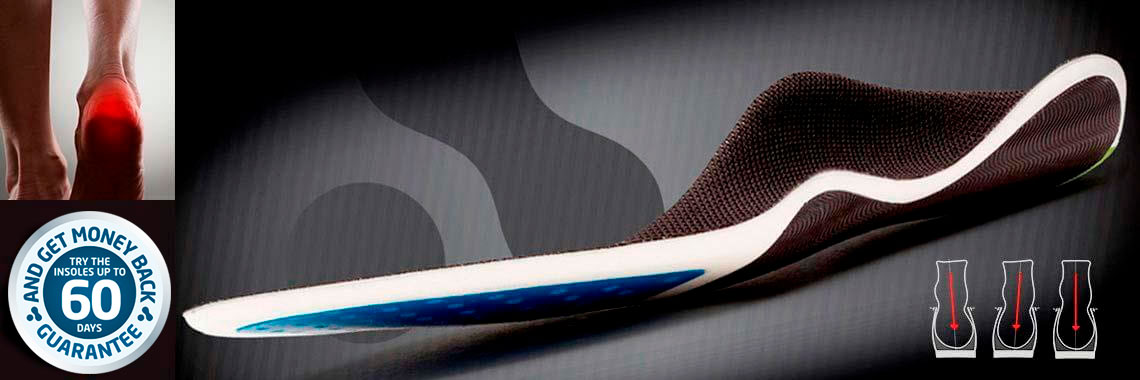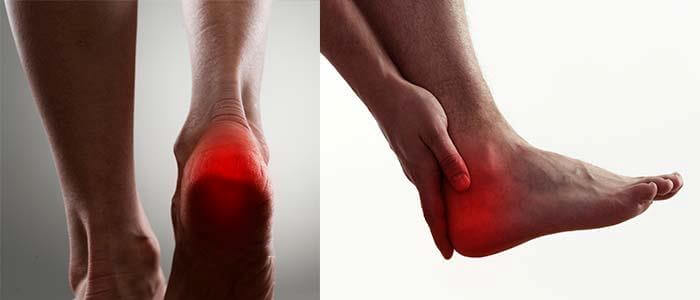
Heel spur – Plantar Fasciitis
A heel spur is an inflamed band of connective tissue under the foot. The condition can be very painful. Heel spurs are very painful and may require long-term treatment. A heel spur can cure itself but may recur later.
Heel spurs often occur after the age of 35 and in people who are flat-footed or have high arches (a hollow foot). Heel spurs develop more often in women than men.
Several factors may play a role in the development of heel spurs.
Do I have the symptoms that indicate that I have a heel spur?
- You feel pain if you apply pressure to the spot where the tendon is attached to the heel bone. Less pain when you rest.
- If your heel is stiff and tender and you limp, especially in the morning when you awake.
- You find it painful to stand on your toes or walk on your heels.
- You sometimes have a tingling feeling along the outside of your foot.
- Tenderness when you stand and periodical swelling around the heel bone.
A heel spur is the term for an inflammation of the tendon blade in the sole of the foot. Plantar faciitis often causes severe pain in the heels when standing, walking, jumping or running. Plantar fasciitis is very painful and may require prolonged treatment.
The condition is most often seen in middle-aged people and flatfoot sufferers. Women suffer more often from heel spurs than men. The development of heel spurs may be due to a number of different factors.
What are the symptoms of plantar fasciitis/ heel spurs?
- Pain in the tendon attached to the heel bone and the pain is milder when resting
- Stiffness and soreness around the heel especially in the morning when you wake up – forcing you to limp
- Pain when standing on your toes or walking on your heels
- Periods with a “tingling” feeling along the side of your foot
- Feeling pain when standing on the foot and sometimes swelling of the heel bone. Sore heels generally.

What causes a heel spur?
Your heel spur may have developed for several reasons. The typical causes are:
- Running in shoes that do not fit properly or on too hard an underlay.
- Sudden increase in training intensity compared to what you are used to. Even if you are in good shape, you can develop a heel spur.
- Obesity. If you are overweight, the extra strain on your heel can cause heel spurs.
- Shoes with little or no shock absorption may contribute to excessive strain and cause heel spurs.
- If you walk, run or stand more than you are accustomed to. Start gently.
- Poor running technique.
What treatment is available?
The inflammation will often subside – but it is a long and painful process that can take months. Walking helps. Rest the heel as often as you can. Avoid running or standing for too long. There are many different approaches to treating heel spurs. Surgery is the last resort – and the convalescent period after surgery is often long and painful. Feeling pain as long as 12 months after surgery is not uncommon.
What can I do if I have a heel spur?
You can do many things:
- You can take painkillers (analgesics, e.g. Paracetamol) and anti-inflammatory drugs (seek medical advice).
- In some cases, your doctor may recommend treatment with corticosteroids. These drugs can relieve pain for some weeks and alleviate inflammation but there is no guarantee that the condition will disappear.
- Ask your doctor or physiotherapist for exercises you can do to relieve the pain.
- Avoid a hard underlay. Wear shoes with good cushioning under the heel or – better still – wear insoles with heel cushions in your shoes. The heel cushion should be at least 1 cm thick. The thicker, the better.
Align Footwear
Our triplanar points technology is an innovative and patented insole, designed and developed by an American physiotherapist.
Align Footwear® insoles realign the foot into a more neutral position and relieve pressure on the plantar fascia and heel spur. The gel heel pad gives a softer surface on which to tread and the pad protects and relieves pressure on the heel. Shock absorbing materials in the insoles counteract much of the strain and pressure on the heel. You will be able to walk more comfortably and more naturally.
Align Footwear® insoles improve mobility, comfort and performance. They encourage a better posture and physical adaptation in the kinetic chain, to make you improve your well-being. When the insoles coax the body into a correct natural posture, the strain of each step is more evenly distributed. Our insoles reduce the destructive shock waves running through your entire body every time your feet touch the ground. This reduces strain in your joints, muscles, tendons and ligaments.
Based on many years of research into our triplanar points technology, we have developed a design that brings the ankle up to 32% closer to a neutral position and corrects a pronation (crooked gait) by up to 27%. The insoles also adjust the shin bone up to 40% closer to the neutral position. Ankle and shin alignment is the key to reducing fatigue, pronation and supination. By giving support to the foot, we maintain full foot muscle mobility. You cannot achieve good mobility if you simply build support under the sole of the foot, e.g. with a compression pad or arch support.

60-day Refund Policy
Full satisfaction or your money back

Any Questions?
Please contact us – call +45 22 633 633
or email to contact@alignfootwear.eu


